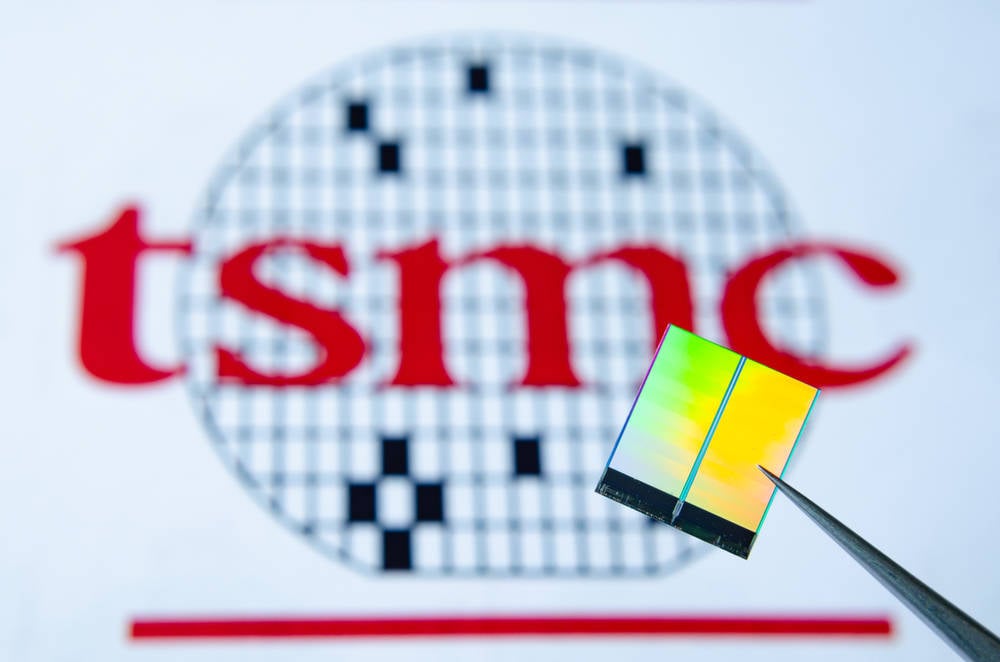TSMC Prioritizing High-NA EUV Scanners For R&D

Taiwan Semiconductor Manufacturing Company is prioritizing, among its manufacturing tools, the acquisition of high numerical aperture extreme ultraviolet scanners for research and development.
"TSMC carefully evaluates technology innovations such as new transistor structures and new tools and considers their maturity, cost, and benefit to customers before deploying them to volume production," the chipmaker told The Reg.
"As we disclosed at our 2024 Technology Symposiums earlier this year, our EUV tool count was ten times greater in 2023 versus 2019, accounting for 56 percent of the global installed base, and our EUV wafer moves were 30 times greater. TSMC plans to bring in high-NA EUV scanners first for R&D to develop the associated infrastructure and patterning solution needed for customers to fuel innovation," it added.
High-NA EUV scanners are advanced lithography machines that use extreme ultraviolet light to etch very fine, dense patterns onto semiconductor wafers. These tools are critical for producing smaller, more powerful chips – which in turn enable TSMC to increase transistor density and chip performance.
Next gen EUV tech is considered so crucial that ASML, the only manufacturer in the world that makes extreme ultraviolet lithography systems, is subject to export licensing requirements, primarily affecting exports to China.
- Angstrom age angst ameliorated as ASML's High NA EUV chipmaking kit delivers
- Uncle Sam lays out plans for $825M EUV R&D site in New York
- Jensen Huang asked SK hynix to give Nvidia 12-layer HBM4 chips earlier
- TSMC reportedly cuts off RISC-V chip designer linked to Huawei accelerators
TSMC is scheduled to receive its first shipment of the tools from ASML by the end of this year, according to recent media reports. The machines – which have a hefty price tag of around $350 million apiece – will reportedly be installed at TSMC's R&D center near Hsinchu, Taiwan.
The machines won't immediately go into operation – they will require extensive testing, calibration, and engineering work to optimize the processes needed for high-volume manufacturing. Even then, according to reports, they may not go into commercial production until after 2030. By that point, TSMC is expected to debut its A10 node – a node still several generations away.
On TSMC's Q3 2024 earnings call, CFO Wendell Huang laid out the timeline. "We're ramping the N2 in 2026. There will also be some preparation costs for ramping N2. And as we migrate every leading node, more and more advanced, this preparation cost will become bigger and bigger." ®
From Chip War To Cloud War: The Next Frontier In Global Tech Competition
The global chip war, characterized by intense competition among nations and corporations for supremacy in semiconductor ... Read more
The High Stakes Of Tech Regulation: Security Risks And Market Dynamics
The influence of tech giants in the global economy continues to grow, raising crucial questions about how to balance sec... Read more
The Tyranny Of Instagram Interiors: Why It's Time To Break Free From Algorithm-Driven Aesthetics
Instagram has become a dominant force in shaping interior design trends, offering a seemingly endless stream of inspirat... Read more
The Data Crunch In AI: Strategies For Sustainability
Exploring solutions to the imminent exhaustion of internet data for AI training.As the artificial intelligence (AI) indu... Read more
Google Abandons Four-Year Effort To Remove Cookies From Chrome Browser
After four years of dedicated effort, Google has decided to abandon its plan to remove third-party cookies from its Chro... Read more
LinkedIn Embraces AI And Gamification To Drive User Engagement And Revenue
In an effort to tackle slowing revenue growth and enhance user engagement, LinkedIn is turning to artificial intelligenc... Read more

